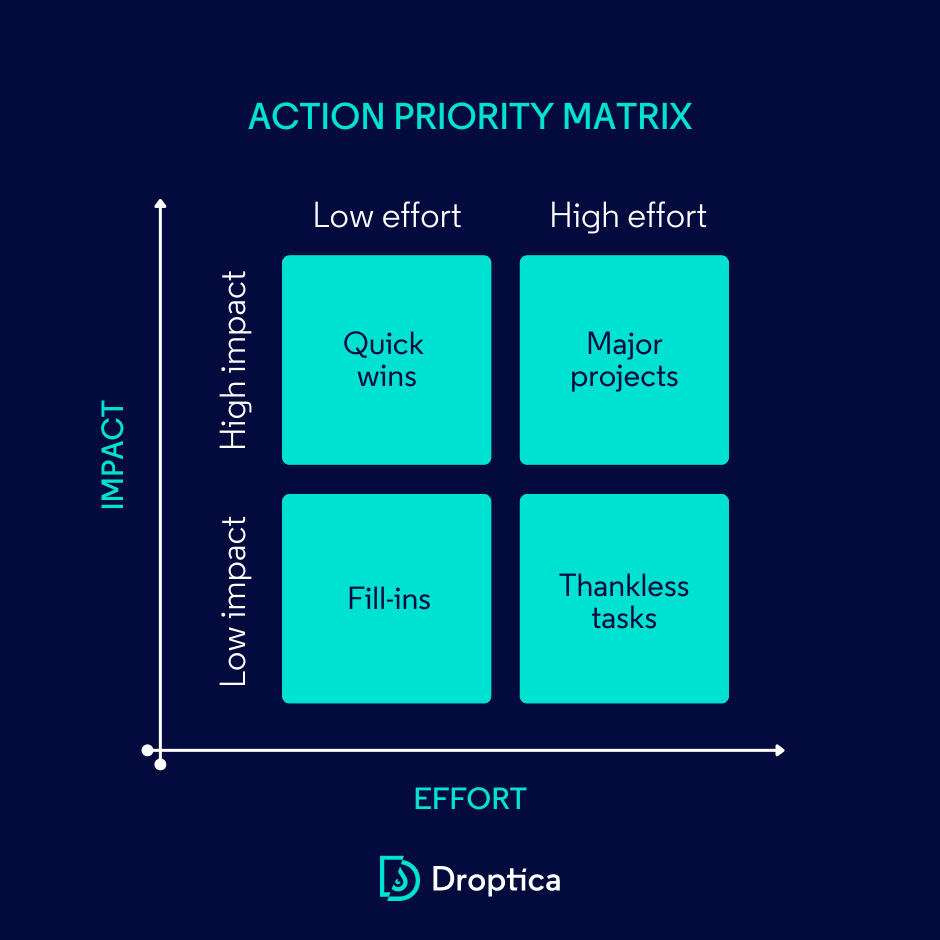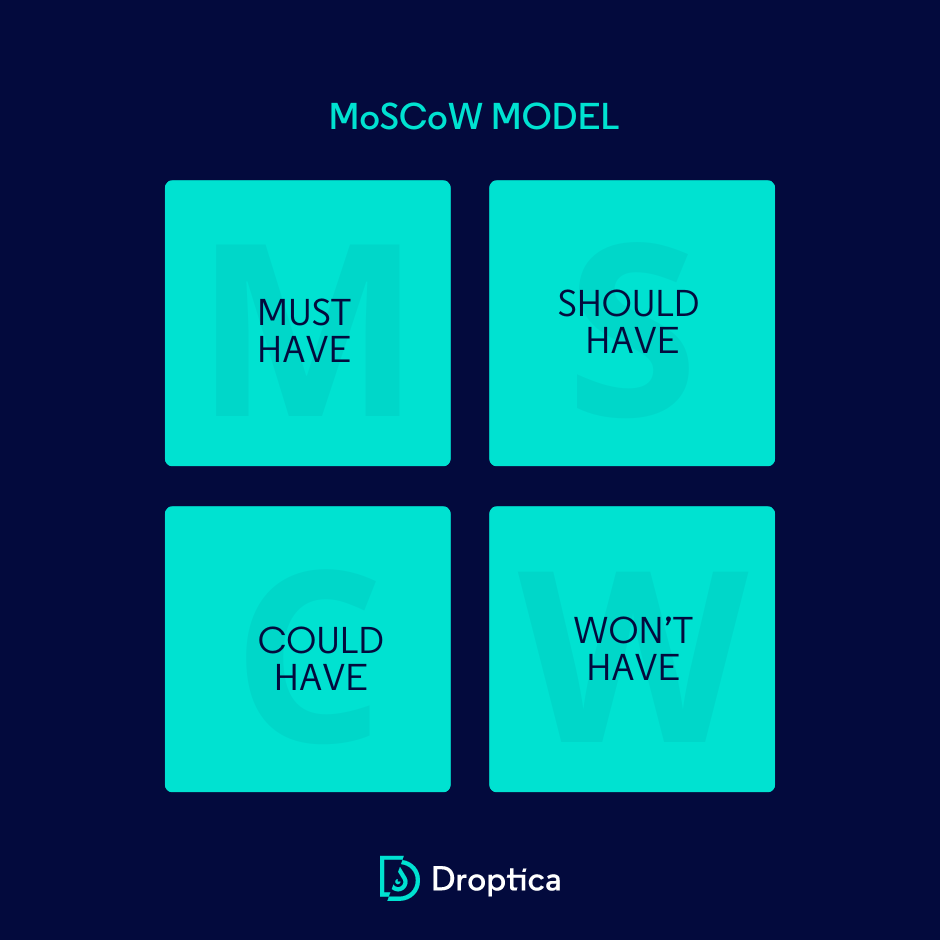
Proof of Concept - How to Use it to Make the Software Project a Success?
The market for digital products is changing. It's getting harder and harder to break through with something new as a startup or build a system for internal use within an organization that is better than off-the-shelf SaaS solutions. The key to success is to be efficient in your planning to build an IT product. One indispensable practice during the idea phase of a project is Proof of Concept. In this article, I look at how PoC can benefit IT ventures (with a particular focus on Drupal-based applications) and provide invaluable support to our clients - from startups to corporations.
What is Proof of Concept?
Proof of Concept (PoC) is a way of demonstrating and confirming project assumptions. It’s an experimental version of a product, project, or idea used to illustrate its feasibility or effectiveness in practical application. It’s essential in the verification and development of new technologies, services, or business strategies.
In the business and technology context, PoC helps organizations avoid costly investments in ideas that aren’t feasible, allowing them to focus resources on the most promising projects.
PoC shouldn’t be confused with MVP (Minimum Viable Product). It doesn’t have to be a ready-to-release product or a base on which the project will be developed. It’s only meant to be a tangible proof of concept for a product that meets its objectives and has the potential to achieve its intended purpose. Unlike an MVP, the simplest product version you can offer to customers for feedback, a PoC may not even have a usable form for external users.
Proof of Concept in software development on Drupal
If you're undertaking a project, you certainly have a reason for it. Typically, web or mobile applications are developed to solve specific business problems of a selected group of target users. Often, they have their own habits, processes, and technologies that they use daily. Knowing them would be helpful in confirming whether your new project can address these requirements.
That's why Proof of Concept is crucial for verifying the most critical assumptions of a project. In the case of Drupal, we have a lot of experience and can confirm most of the requirements to clients without running a PoC.
However, Proof of Concept is worth applying to particular project assumptions that significantly affect the success of a project and often remain unknown at the concept stage or in the selection of a development agency.
Drupal is an open source technology that has many "off-the-shelf" components. However, what is ready-made often requires a certain level of customization for it to solve a given business problem. For example, PoC for the use of Drupal can prove that an intranet on Drupal can have integration with systems currently in use in the organization.
What is a Proof of Concept trying to achieve?
Proof of Concept, or PoC, not only confirms the feasibility of the project but also provides several benefits:
a. Budget savings: starting a project with assumptions that aren’t supported by hard evidence of feasibility can lead to wrong decisions, at least regarding the technology you’ll use. Sometimes a given technology may seem appropriate on the surface, but later you have to adapt it heavily or change it completely, which unnecessarily consumes the project budget. If you want to minimize the risk of wasting money, the PoC phase is a reasonable solution.
b. Faster time-to-market: whether you're racing to market by creating a startup or need to meet the deadlines set by your superiors whn building a product internally, the deadline is crucial. If you drag out the development phase, you won't keep your word to clients or stakeholders. The PoC phase allows you to prioritize tasks and plan the schedule for their completion according to actual technological constraints. This will avoid delays and shorten the time-to-market, i.e., the time from the start of work on the product to its availability to customers.
c. Securing the position of the person responsible for the project: before you decide to spend corporate funds, you must realize that the people directly involved in enforcing the project are responsible for its failure, i.e., the Product Owner, a specialist from the purchasing department or the CEO of the startup. As those responsible, let's remember to secure our position properly. To do so, you need hard evidence that due diligence was performed in the project idea phase - which a Proof of Concept will ideally serve. PoC is a good practice for any well-run organization.
d. Low entry threshold: looking at the action priority matrix, PoC is in the "low effort / high impact" segment, the so-called "quick wins" zone. At a relatively small cost, you can gain a significant competitive advantage. An example? Validation of an unprecedented solution on the market. You can verify its usefulness on a test group and confirm its usability, which ultimately improves the product's sales growth or increases a specific target group's satisfaction with its use.

How to create a Proof of Concept?
The approach to Proof of Concept depends on the needs of the project and the idea for which certain assumptions need to be tested or verified (e.g., choosing the right tools or the validity of using a particular technology). As an example, I present PoC in the context of Drupal, for which a specific sequence of steps can be applied, such as:
1. Requirement analysis and PoC result planning: in case the client has a list of functionalities, we can analyze and plan the PoC phase accordingly. If the ideas aren’t yet fully articulated and prioritized, we can help conduct design workshops and together create, for example, the MoSCoW matrix. This technique determines which functions, tasks, and project goals are essential and which can be postponed or omitted altogether.

2. Setting up a test instance of Drupal: after planning priority requirements, we configure and modify the project architecture to fit the type of project.
3. Demonstrations and iterations of key features for the project (e.g., integration): once the product is configured correctly, we’ll conduct a demo phase that will be the basis for further iterations. We’ll repeat this process, working closely with the client and gathering feedback until we finally achieve the intended PoC result.
4. Closure of the PoC phase: summary, creating documentation, and transferring the Proof of Concept results to the client.
Remember that the appearance of prototypes or examples within the PoC phase or refining their functionality at this stage doesn’t make sense and is not implemented. The priority is to verify the requirements' feasibility within the technological constraints.
Who implements the Proof of Concept phase?
In the case of an IT project team implementing the Proof of Concept phase at Droptica, the team consists of two people. They are consultants with many years of experience who previously served (or still serve) as Tech Lead and Project Manager.
The Project Manager leads the PoC phase from start to finish, coordinating meetings and drafting documentation. The Tech Lead, a person who is an old hand at Drupal, can quickly and effectively create a concept that meets the interests of the client's business. Both individuals are at the senior specialist level, meaning they have a minimum of ten years of experience and can proactively communicate with the business.
As for stakeholders on the client side, on the other hand, there are no limits on the number of people involved in the PoC phase. We’re committed to listening to the needs of people representing different departments inside the company to ensure we address all the most critical requirements and perspectives.
The example of a PoC phase conducted at Droptica
To further illustrate the importance of Proof of Concept, I would like to give an example of the PoC phase that Droptica completed in regard to an intranet project for a company. The process took about a month and turned into a multi-month project.
Initial consultation and understanding of the client's business
The discussions with us on the client side involved people who knew the business and not necessarily the technology. It was up to us to show that it was technologically possible to meet their needs.
At the outset, we made sure that the client knew exactly what they expected. However, if doubts arise at this stage, we recommend conducting a discovery workshop first to help clarify expectations and project goals.
Droptica's work with clients during the PoC phase focuses on validating the feasibility of these expectations - whether through existing solutions available on Drupal.org or by creating dedicated options from scratch.
Demonstration of key elements of the project
As part of the PoC, we demonstrated in detail various aspects of planning the intranet, such as modified user roles, the organization's structure, the needs of HR departments, or the integration of different companies within one organization.
We also emphasized the CMS's customizability to meet the client's branding needs. It was also crucial to show that users could log in via Active Directory and to prove that adding basic Microsoft applications to the intranet was possible.
How do we work on PoC?
During the Proof of Concept phase, our team takes a number of steps to make the process efficient and lead to satisfactory results. This was the case in the example above. What characterizes our approach?
Time and priority management
Managing client expectations and efficient use of time is a priority for us. We made sure to report on the progress of the work, the consumption of hours for development and research, as well as for meetings and feedback collection on an ongoing basis. Flexibility in managing the scope of work has allowed us to focus on the client's most essential requirements.
Guidance during the talks
We try to avoid pointless discussions and unnecessarily prolonging the process by focusing on concrete, practical solutions. We present a simple demonstration interface, such as an intranet on Drupal, which isn’t necessarily the final look of the website or system but includes all the key elements of the client's vision. Such visualization helps to understand the project and its requirements.
Planning further cooperation
The PoC provides not only an opportunity for technical verification but also a chance to build trust and a sense of each other before embarking on a long-term collaboration. At the end of the PoC phase, we take stock of accomplishments, determine the following steps, and plan the next actions, which can range from the subsequent procurement to starting work on the MVP of the target project.
Proof of Concept in software development - summary
Choosing a technology that is ready and tested by the market and then validating the possibility of modifying it for a given business is definitely more advantageous than creating a project from scratch.
If you’re already considering using Drupal, PoC will allow you and other stakeholders to build trust in the subcontractor and the technology itself, as well as understand the values of the technology. At our Drupal agency, we have a rule that we do projects we believe in ourselves, so if you have an idea or a plan for a new product, we'd be happy to help you validate it, then execute it and help you succeed.











